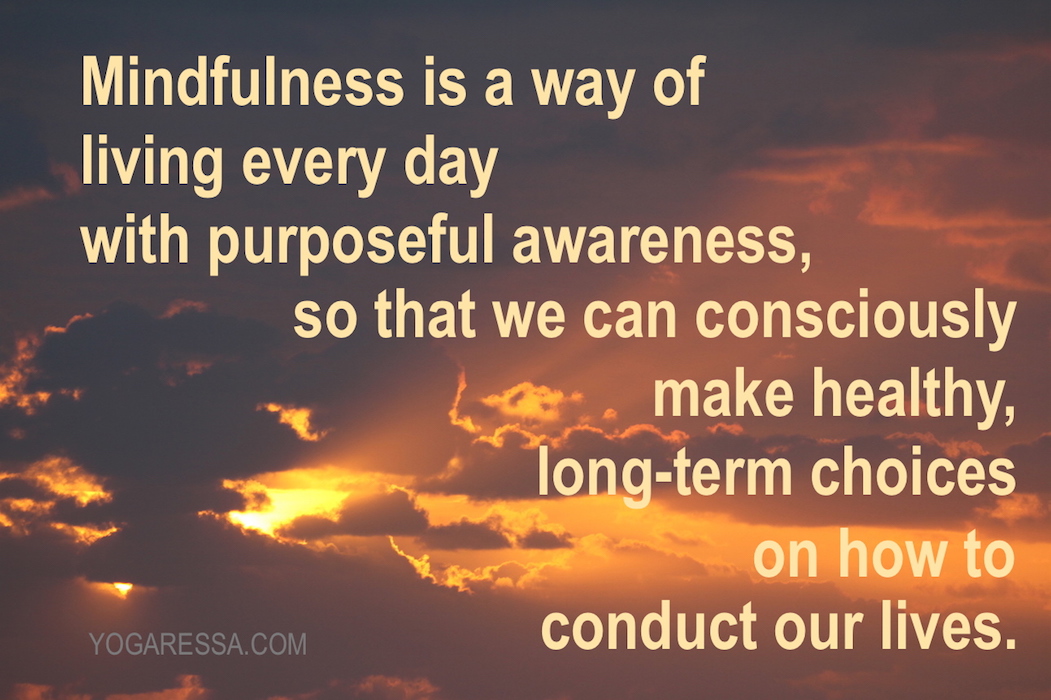What is Mindfulness?
Mindfulness is the new buzzword for an old tradition. It’s been revamped, repackaged, rebranded and given an extra swipe of lipstick (or dash of aftershave) as we read about how celebrities, successful business execs, and most recently, Olympic athletes, are using the magic of mindfulness, as part of their daily routine.
So, what is mindfulness, exactly?
Mindfulness is the state we are in when we are not distracted, but fully immersed in the present moment.
That’s it! Nothing more complicated than that.
Most of the time, our attention is distracted by our thoughts and emotions, by our worries or anxieties about the future, or by regrets of the past. We are rarely truly connected to the present.
When we practice mindfulness, whether it’s part of a formal routine, or simply a random minute or two during a busy day, we hit the pause button and intentionally pay attention to what is happening, right now. Read that again—intentionally pay attention to what is happening, right now.
This can be really boring, when your mind would rather be distracted by something else; like when your next coffee break is, and what if you don’t get that important phone call, and why did you say that thing you said in that meeting last week, and how annoyed you will be if they’re still doing construction work on your route home … which is why mindfulness is often described as a form of mental training. It may not be complicated, but it may take discipline to adopt mindfulness habits, and to “be here, now“, in this very moment.
Jon Kabat-Zinn’s definition of mindfulness is,
“The awareness that arises through paying attention on purpose, in the present moment, and non-judgmentally”.
And I would add two important words to that—”without expectations“. Approach mindfulness without wanting any specific results (well come on, enlightenment, hurry up already). Replace judgment or expectations with curiosity and commitment. Simply apply mindfulness techniques regularly, and over time, notice the impact that has on you.
Per Thich Nhat Hanh, the Buddhist approach is to practice mindfulness in each moment.
Once someone asked the Buddha,
“Sir, what do you and your monks practice?”
“We sit, we walk, and we eat,” the Buddha replied.
“But sir,” the questioner continued. “Everyone sits, walks, and eats.”
“Yes,” the Buddha said, “But when we sit, we know we are sitting. When we walk we know we are walking. When we eat, we know we are eating.”
The results of mindfulness are awareness, insight, acceptance, love, and the desire to relieve suffering and bring joy—to ourselves, and to others.
There are a myriad ways to practice mindfulness. If you don’t know where to begin, here’s a good start: Elisha Goldstein’s “7 Things Mindful People Do Differently“.
And then, keep exploring. I find myself drawn to some mindfulness and meditation techniques more than others, and I also enjoy new approaches to these ancient techniques. With time, you will find your very own answer to the question of What is Mindfulness, as your personal practice unfolds.

To your clarity of mind and to joy in your heart!, through the practice of mindfulness and meditation!


